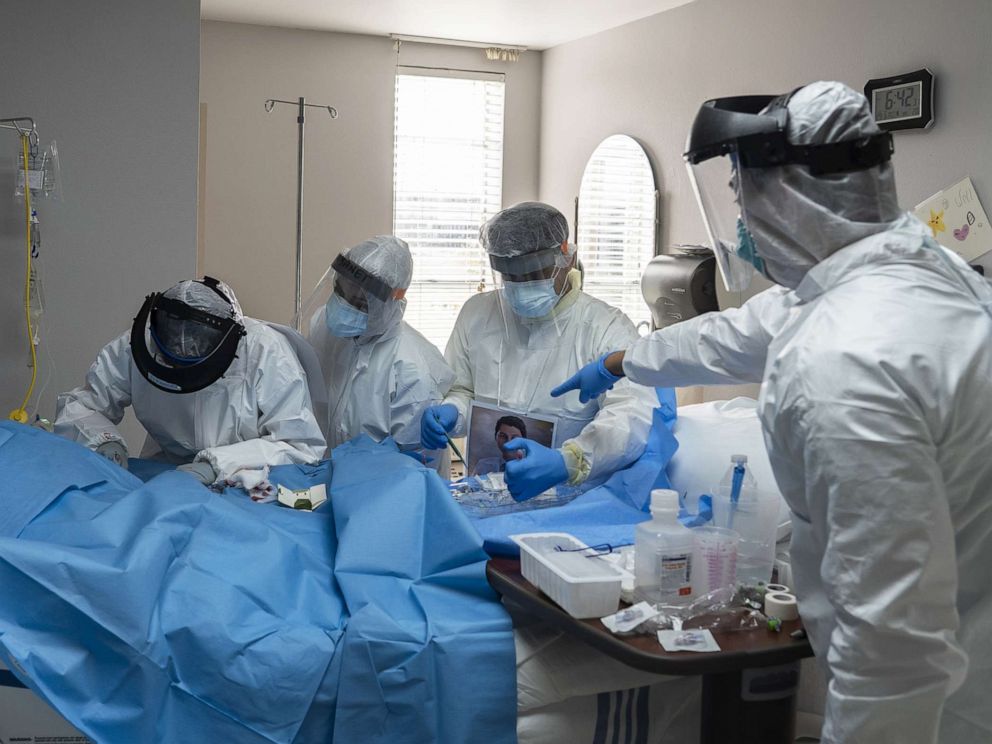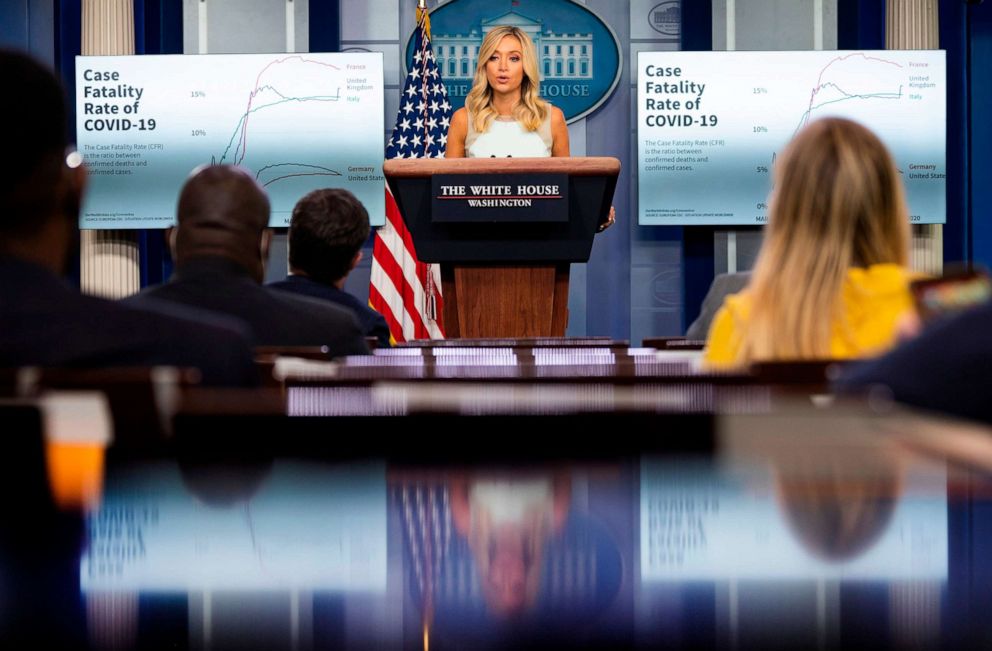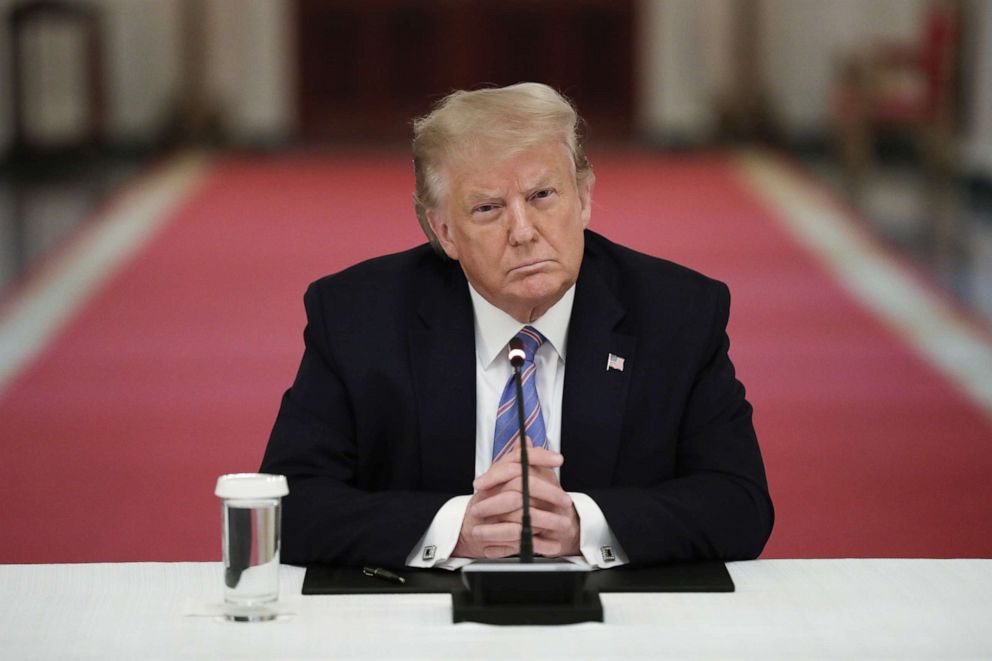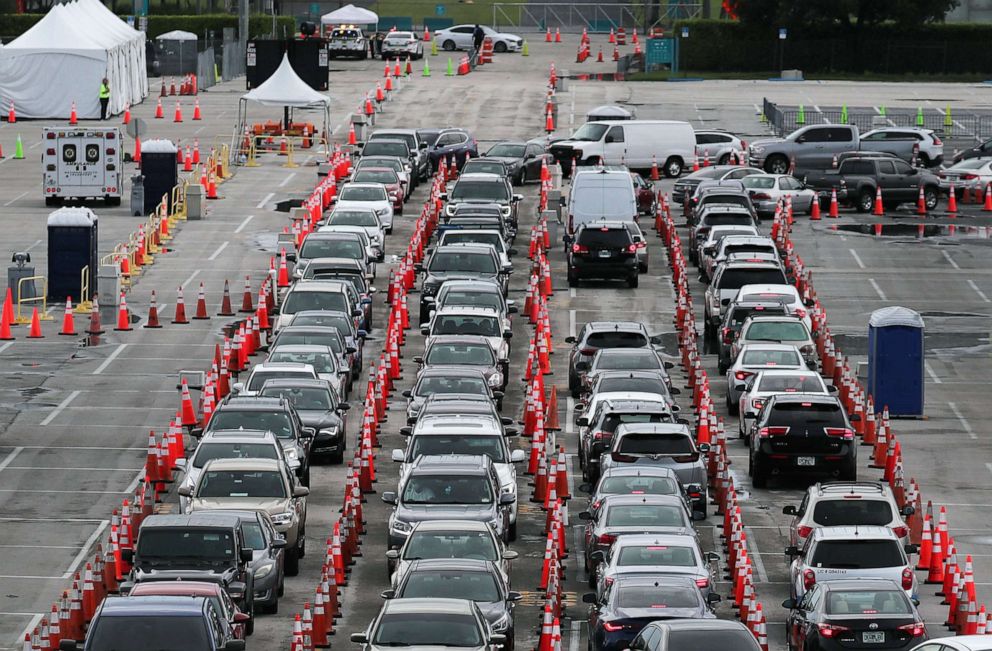US coronavirus mortality rate not lowest in world, despite Trump claim: FACT CHECK
The president has made false statements about the virus's mortality rate.
President Donald Trump and his White House have repeatedly claimed this week, falsely, that the United States has the lowest novel coronavirus mortality rate in the world.
Trump's series of tweets on the matter -- and his press secretary's insistence to reporters -- reflected an attempt to explain his comment during a speech over the weekend that 99% of coronavirus cases are “harmless,” which received significant blowback.
White House press secretary Kayleigh McEnany said Monday that Trump was talking about the mortality rate in the U.S. when he made the 99% reference, although the president made no mention of mortality or deaths in his initial remarks.
But in any case, the United States' COVID-19 mortality rate is not actually the lowest in the world, nor is it even among the lowest.

The claim: The United States' COVID-19 mortality rate is the lowest in the world
Trump tweeted Monday that “we now have the lowest Fatality (Mortality) Rate in the World" and that the coronavirus mortality rate in the United States was "just about the LOWEST IN THE WORLD."
He tweeted on Tuesday, "We have the lowest Mortality Rate in the World" and said "The Fake News should be reporting these most important of facts, but they don’t!"
Press secretary McEnany backed him up Monday, showing reporters charts comparing the United States "case-fatality rate" to other countries.'
Trump repeated his claim about the U.S. mortality rate at the White House on Tuesday afternoon, saying it was "the lowest anywhere in the world."

The facts: The U.S. has the 9th worst mortality rate in the world
The mortality rate is the number of deaths from COVID-19 relative to the overall population.
As of Tuesday, the United States had the ninth-worst mortality rate in the world, with 39.82 deaths per 100,000 people, according to Johns Hopkins University.
The case-fatality rate is the number of deaths from COVID-19 relative to the total number of confirmed cases, shown as a percentage.
The U.S. also measures poorly in terms of its case-fatality rate. On Tuesday, it was in the middle of the pack relative to other countries, with a rate of 4.4%, according to Johns Hopkins.
In other words, the U.S. finds itself on a shortlist of countries that have the most coronavirus deaths proportional to both its total population and to its confirmed cases.
In absolute terms, the United States also has the greatest number of overall deaths from coronavirus, with nearly twice as many as Brazil, which ranks second, according to Johns Hopkins.

Why the rates don't reflect the true state of the epidemic
Both the mortality and case-fatality rates are based on data that public health experts have at just one point in time and do not accurately represent the current state of the epidemic in America, according to Dr. John Brownstein, chief innovation officer for the Boston Children's Hospital and a professor of epidemiology at Harvard Medical School.
“It’s a false narrative to take comfort in a lower rate of death,” the nation's leading infectious disease expert, Anthony Fauci, told reporters on Tuesday, according to Alabama.com. “There’s so many other things that are very dangerous and bad about this virus, don’t get yourself into false complacency."
In the United States, testing is not widespread to the degree experts say it should be and has failed to catch many cases, particularly people not exhibiting symptoms.
As such, the overall case-fatality rate is likely lower for the U.S. than the 4.4% reported by Johns Hopkins – but it is also likely lower for other countries around the world, for the same reason, according to Brownstein, an ABC News contributor.
In recent weeks, the percentages of people testing positive in certain parts of the country has suggested the epidemic in the United States is out of control, Brownstein said. If the country had a better grip on the pandemic, fewer people who get tested would end up testing positive, he said.
Likewise, the mortality rate does not reflect the true state of the pandemic, since it's based on outdated, incomplete data.
While Trump is correct to argue that the mortality rate is far lower now than it was earlier this year, the virus's continued spread in many states has led to increases in hospitalizations in recent days.
In addition, increases in deaths typically lag a couple of weeks behind increased hospitalizations.

Meanwhile, data from states grappling with recent surges show that younger people appear to be transmitting COVID-19.
Those younger, more mobile populations are less likely to fall ill and get tested; as a result, their cases are less likely to be caught by testing. But those young people can act as vectors that transmit COVID-19 to older and more vulnerable populations.
If members of older and more vulnerable populations fall ill, then cases, hospitalizations and deaths would also surge. Those increases would likely not be reflected in data on testing, hospitalization, and deaths until weeks from now.
Finally, it can be misleading to compare mortality rates across countries, since, according to Johns Hopkins, countries test different types of people, have varying demographics, and have health care systems of different quality, among other factors.
The conclusion: The rates do not give a good picture of the pandemic
Trump's claim that the United States has the lowest mortality rate in the world -- or even among the lowest -- is false and does not accurately represent the current state of the epidemic in America.
“While one life lost is too many, we’re encouraged that the U.S. mortality rate continues to decline,” White House deputy press secretary Sarah Matthews said in a statement.
ABC News' Sony Salzman contributed to this report.




